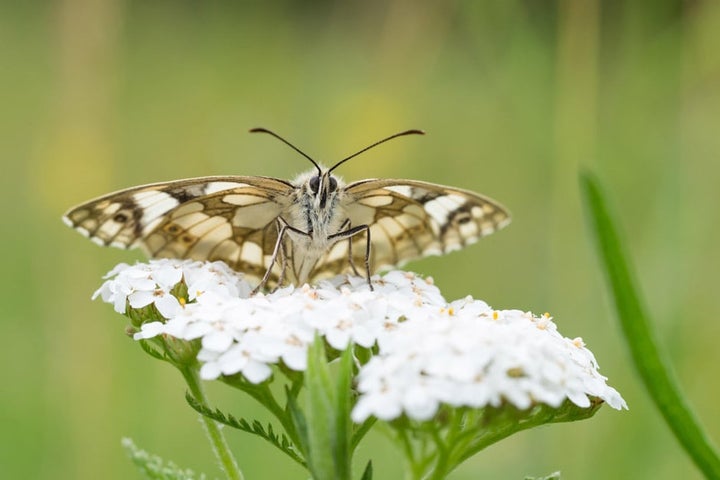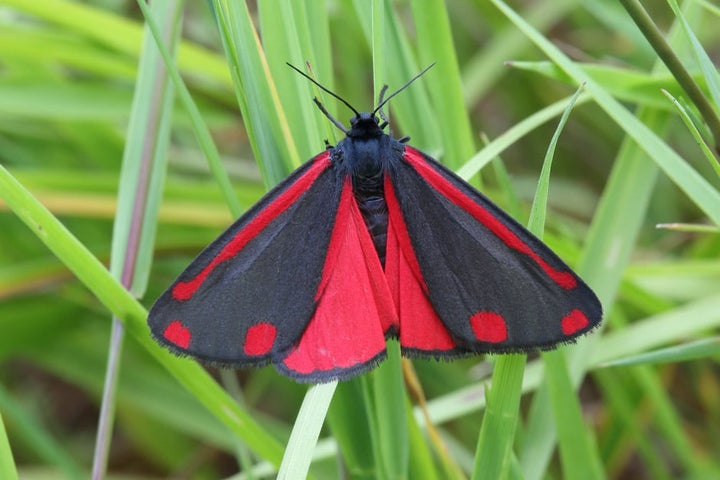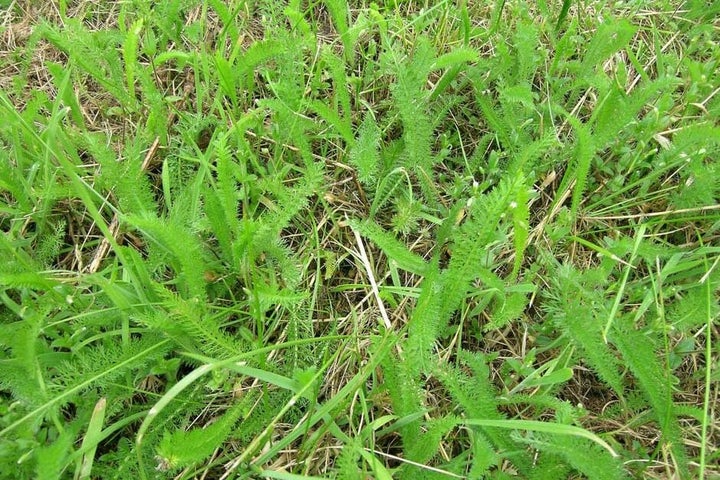
Quick facts
The botanical name for yarrow is Achillea millefolium
It is a UK native wildflower found among short grass on banks, verges and wasteland, especially on dry, gravelly and chalky soils
Yarrow supports a variety of insects, including numerous beetles, flies, true bugs, butterflies and moths
It spreads by creeping rhizomes and seed, and can form large patches in lawns
If you need to control yarrow, non-chemical methods are effective
What does yarrow look like?
Yarrow is a patch-forming with aromatic, feathery, grey-green leaves. It produces upright, unbranched flower stems to 80cm (2½ft) tall from July to October. The small, daisy-like flowers are white, or occasionally pink or reddish, with many individual flowers forming dense, flat-topped heads. The grey-brown seeds that follow are a flattened tear-drop shape.
Underground, yarrow produces a deep fibrous root system and creeping .

Did you know?
The pink and red forms of wild yarrow have been used to breed a wide variety of Achillea cultivars. These garden favourites add colour to mixed borders and are great for cutting and drying.
Is yarrow a weed?
Yarrow is a UK found throughout the country in short grassland on banks, verges, pastures and wasteland.
It is a fantastic plant for wildlife, featuring on the RHS Plants for Pollinators list and supporting over 100 species of insect. These include numerous beetles, flies and true bugs, particularly aphid-eaters, as well as common blue, painted lady and heath fritillary butterflies. It is especially attractive to moths and micro-moths, with the cinnabar, ruby tiger, mullein wave and frosted orange moth among the 42 species that use it as a food plant.


Yarrow’s ability to tolerate drought makes it a popular choice for wildflower meadows on dry soils, and it is especially good for adding late colour when many other wildflowers are going over.
However, as it can spread to form large patches, and its feathery, glaucous foliage is noticeable in a lawn, it is likely to be considered a weed by gardeners wanting a fine, uniform sward.
What is a weed?
The term ‘weed’ describes a plant that is growing where it isn’t wanted. Weeds usually thrive in average garden conditions, reproducing and spreading easily. It is up to you to decide what you call a weed and what you choose to retain or remove.
Frequently asked questions about controlling yarrow in lawns
Here are our answers to your most common questions about dealing with yarrow in lawns:
How invasive is yarrow?
In lawns, yarrow mostly spreads by its creeping , which grow quickly into adjacent ground. However, if allowed to flower, it can produce large numbers of seed which may be dispersed by the wind or eaten and spread by birds.
Yarrow is a tough little plant, growing well in poor soils, able to survive long periods of drought and tolerant of close mowing. It thrives in conditions which weaken lawn grasses, enabling it to establish quickly and spread across a lawn. The good news is that it doesn’t compete as well with dense, healthy grass, so improving the health of your lawn is a simple way to limit its spread.

Do I need to get rid of yarrow?
No – allowing yarrow to grow in a species-rich lawn or grassy meadow is a great way to boost the of your garden and gives you the chance to enjoy its attractive flowers. As its foliage is tolerant of mowing and foot traffic, and is green and compact, it can be left in the sward even if you prefer to keep your lawn short.

What is the easiest way to kill yarrow?
If you have yarrow growing in your lawn and it cannot be tolerated, there are a few ways to remove it:
- Improve the health of your lawn – yarrow is less likely to spread through dense, healthy grass. Follow a programme of spring/summer and autumn maintenance to boost the vigour of your lawn.
- Mow regularly – every couple of weeks during late spring and summer. This encourages a dense sward, supresses yarrow growth by limiting photosynthesis, and stops it flowering and setting seed. To get the most benefit from this method, rake patches of yarrow to lift its foliage before mowing.
- Fork out plants – use a hand fork to lift isolated yarrow plants and a spade or border fork to remove patches of yarrow, inserting it to its full depth and taking care to get as many of the roots out as possible. Wear gloves when handling yarrow as contact with its leaves can aggravate skin allergies. Re-seed resulting bare patches in spring or autumn.
Top tip
Don’t add yarrow roots, rhizomes or seeds to your home compost bin, as it may not reach high enough temperatures to kill them. Instead, put them in your council green waste recycling bin or take them to your local recycling site.
Should I use weedkiller?
No – yarrow is resistant to many selective lawn weedkillers, so although it can be difficult to completely remove, requiring patience and persistence, non-chemical control methods are the most effective choice.












